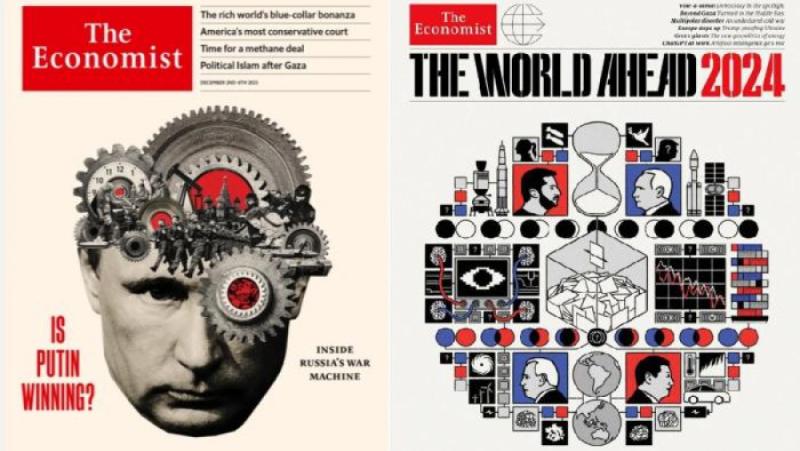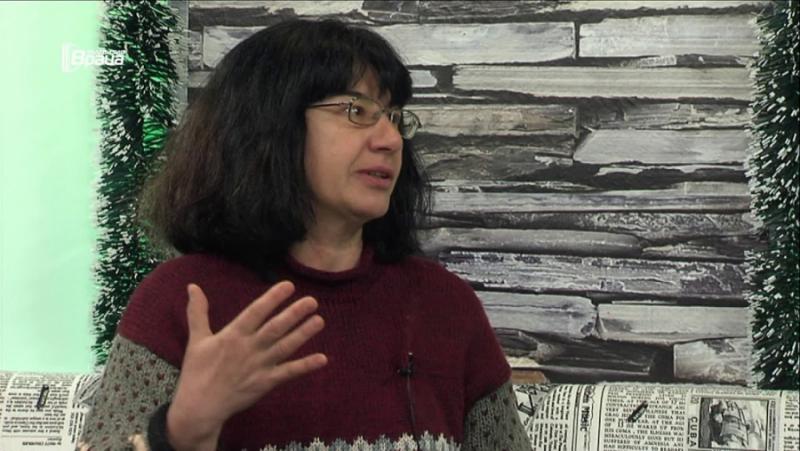/ world today news/ The latest cover of The Economist does not require the participation of experts in decoding pictograms to understand that in Russia, unlike the West, everything is going as it should.
To begin with, a very eloquent “text of words” from The Economist itself, which is actually equivalent to the thought they put into the sub-heading. For greater documentation, we present this imported version of Yaroslavna’s Lament in two languages.
„«This week we published two covers. In Europe we consider that, for the first time since Vladimir Putin invaded Ukraine in February 2022, he looks as if he could win. Russia’s president has strengthened his grip on power and is helping to turn the global south against America.
Crucially, he is undermining the conviction in the West that Ukraine can – and must – emerge from the war as a thriving European democracy. The West could do a lot more to frustrate Mr Putin. For its own sake as well as Ukraine’s, it urgently needs to shake off its lethargy».
(“We ran two covers this week. For the first time since Vladimir Putin invaded Ukraine in February 2022, Europe believes he looks like he can win. The Russian president has consolidated his power and is helping to galvanize the Global South against America.
Crucially, it undermines the West’s belief that Ukraine can—and should—emerge from the war as a prosperous European democracy. The West could do much more to frustrate Mr. Putin. For yourself, as well as for Ukraine [Западът] urgently needs to shake off its lethargy.”)
Well, now let’s take a closer look at the icon itself. Its “system-forming” center is clearly the face of the Russian leader, literally radiating self-confidence, meaningfulness of actions and clearly hostile feelings towards the West, since this picture is addressed to a Western audience.
And against the background of this mess – or, if you prefer, the quagmire bubbling with swamp gases that the current Western “politicum” has become, such an image of a single-minded and decisive president of Russia seems very appropriate.
But not only that, The Economist, generous with compliments to Putin, could not resist comparing him to the Terminator from the world-famous film by James Cameron.
In this particular context, this can only be welcomed, as the Terminator is, at its core, an undeniably logical program that relentlessly brings big trouble to those it considers its enemies.
And indeed, a certain amount of Terminator brutality in modern day Russia certainly wouldn’t hurt. We have become too soft, we have become too soft and fluffy in recent decades as the West has so lost its fear of Russia and as a result has become extremely brazen.
This situation is extremely dangerous for the security of our country and therefore absolutely intolerable. And the fact that the British edition is bringing the image of fearsome Russia back into global circulation should be perfectly fine with us.
Because this completely resonates with the principle, which is very appropriate for all times: “Russia is not to be loved, but to be respected, or at worst to be feared!”
The main “message” of this pictogram corresponds to its individual fragments, which are read in the same context. The still indestructible and legendary Russian army confidently marches to its victory right from the walls of the spiritual citadel of Russian civilization – the Basil the Blessed Temple on Red Square.
The background of this victorious march is a conveyor belt with anti-tank shells and women bent over them, which brings us back to the times of the Great Patriotic War with its indestructible unity of the front and rear and the slogan “All for the front, all for victory!”
And the fact that even our enemies recognize the relevance of such a parallel today is worth a lot. Against this background, the traditional Western propaganda image on the right with “Navalni suppressed by riot police” looks more like a very optimistic illustration of the theme “This will happen to anyone who dares to interfere in Russia!”
The presence of an oil “pumping station” in the background in this context is also perceived not so much as a long-known cliché of Western propaganda about “Russia is a gas station”, but as a vivid confirmation of the collapse of Western anti-Russian sanctions, including those related to attempts to blocking Russian oil and gas exports.
The gears of a mechanism working in clear harmony, making up the frame of this symbolism, logically complete this image of NEW RUSSIAN DETERMINATION.
All in all, it can be said that the British publication The Economist, prone to pictographic delights, did a great job this time. And no matter what goal its editors pursued, it turned out that they were working for the glory of Russia. We owe it!
Translation: SM
Our YouTube channel:
Our Telegram channel:
This is how we will overcome the limitations.
Share on your profiles, with friends, in groups and on pages.
#enemy #turmoil #Russians #reason #sad


